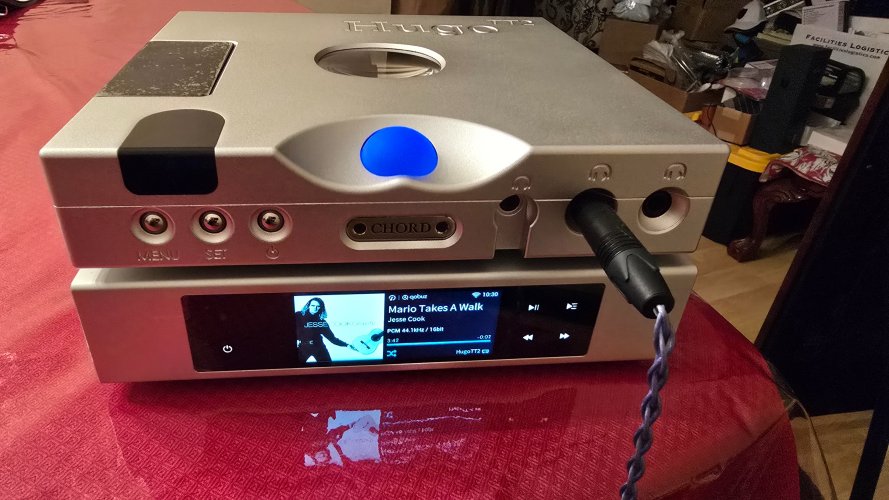Thanks all!
What a bizarre journey this morning... trying JRiver with my built-in Realtek drivers resulted in apparently "direct" playback with no changes but a distorted / static noise when listening. Some quick googling and I changed driver to Windows own, and that A) has resolved the issue and playback is perfect and B) I can now play 88.2, but not 176.4. I still can't use DoP, but DSD does convert and sound fine using default settings. How should I configure this?
44.1 16-bit seems to become 44.1 24-bit:

My main concern is whether something weird is happening between before the signal is sent to Hugo TT 2. On this evidence, everything is fine?
What a bizarre journey this morning... trying JRiver with my built-in Realtek drivers resulted in apparently "direct" playback with no changes but a distorted / static noise when listening. Some quick googling and I changed driver to Windows own, and that A) has resolved the issue and playback is perfect and B) I can now play 88.2, but not 176.4. I still can't use DoP, but DSD does convert and sound fine using default settings. How should I configure this?
44.1 16-bit seems to become 44.1 24-bit:

My main concern is whether something weird is happening between before the signal is sent to Hugo TT 2. On this evidence, everything is fine?
Last edited:






















 ? By the way, the sound through the RCA seems more bodily, tactile, three-dimensional.
? By the way, the sound through the RCA seems more bodily, tactile, three-dimensional.

